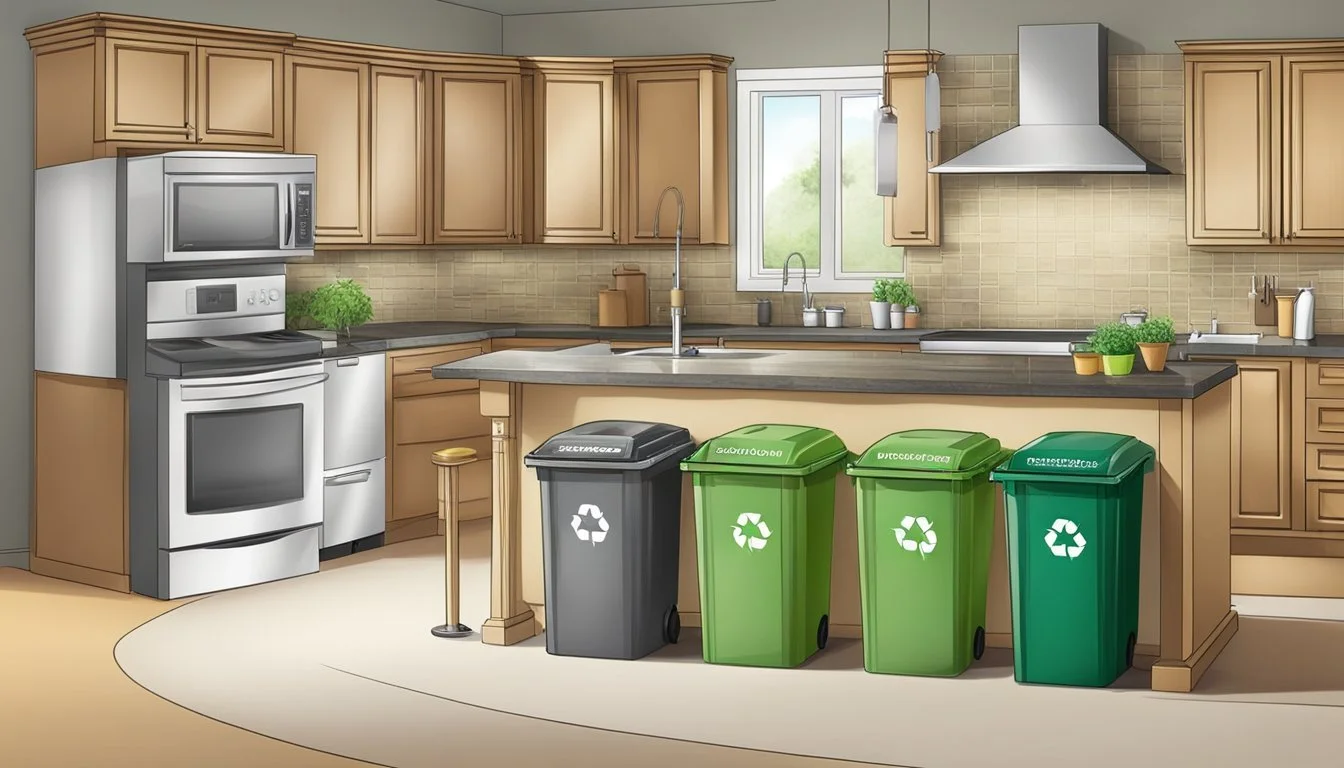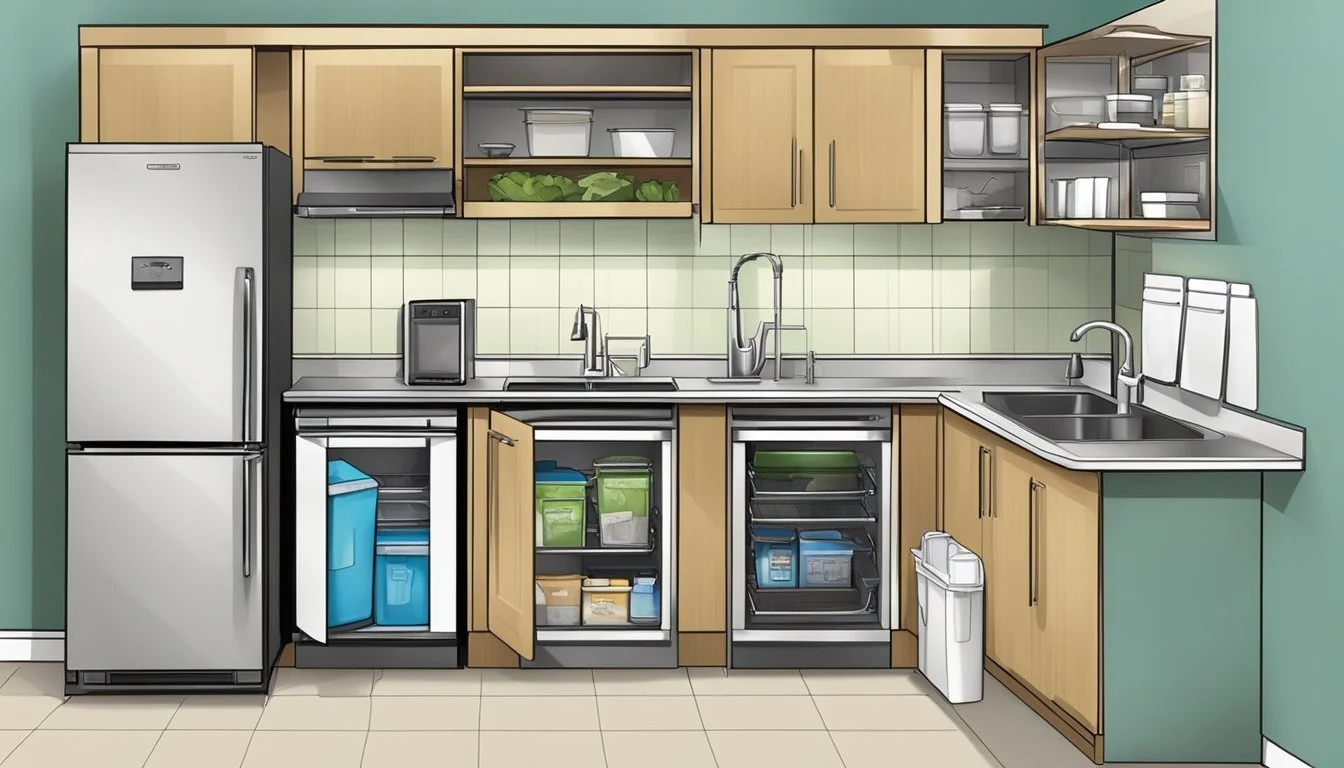The Best Way to Organize Your Kitchen Recycling
Efficient Sorting Strategies
Efficient and eco-friendly organization of recycling materials in the kitchen is a growing concern for environmentally conscious households. The key to a successful kitchen recycling system lies in its ease of use and accessibility. By integrating sorting mechanisms such as designated baskets or bins, individuals are more likely to adhere to recycling routines. These containers can be placed under a bench or within a cabinet, keeping recyclables out of sight yet within easy reach.
A kitchen serves as the central hub of home activity and waste generation, making it an ideal location to establish a recycling center. Clear labels and color-coding on bins not only streamline the sorting process but also ensure that all members of the household, including guests, can participate without confusion. By choosing eco-friendly options that accommodate different recyclables—plastics, papers, and glasses—the kitchen becomes a focal point of sustainability.
The integration of recycling into the kitchen design does not require significant alterations; simple adaptations can create a functional and organized space. Metal buckets or matching baskets are resourceful choices that contribute to an orderly recycling system. When selecting materials, durability and cleanability are vital considerations to withstand daily use and potential spills. A strategically placed recycling station, whether next to the kitchen island or by the exit, can seamlessly blend with the kitchen's flow, promoting a green lifestyle without compromising on aesthetics or functionality.
Understanding Recycling in the Kitchen
Implementing an organized recycling system in the kitchen is integral to eco-friendly living. This section provides guidance on identifying what can be recycled, setting up an efficient recycling station, and following local guidelines.
The Importance of Recycling
Recycling in the kitchen is a crucial step toward reducing waste and minimizing the environmental impact on the planet. By diverting recyclables from landfills, resources are conserved, and pollution is mitigated. Efficient organization of recyclables such as plastic bottles, glass, metal cans, and cardboard can significantly enhance recycling efforts.
Identifying Recyclables
Recognizing items that can be recycled is the first step in an effective kitchen recycling system. Common kitchen recyclables include:
Paper: newspapers and magazines.
Plastic: plastic bottles, containers, and certain plastics.
Glass: jars and bottles.
Metal: tin, aluminum cans, and foil.
Most materials should be clean and free from food residue to be suitable for recycling.
Setting Up Your Recycling Station
A functional recycling station in the kitchen should be accessible and well-organized. Consider the following:
Bins: Separate bins for paper, plastic, glass, and metal.
Space Efficiency: Utilize under-sink cabinets, pantry shelves, or designated areas to avoid clutter.
Labels: Clearly marked bins or sections to ensure proper sorting, possibly using color coding.
Local Recycling Guidelines
Adhering to local recycling guidelines ensures that recyclables are processed correctly. These rules vary by location and may dictate:
What materials are accepted.
Preparation methods (rinsing, sorting).
Collection schedules.
Residents can utilize local resources, such as the Recycle Coach App, to stay informed about specific community guidelines.
Maximizing Kitchen Space for Recycling
Effective recycling in the kitchen starts with smart use of available space. Thoughtful placement and selection of organizers and bins can turn even a small kitchen into a recycling-friendly zone without sacrificing style or functionality.
Optimizing Cabinet and Pantry Use
Maximizing storage space in kitchen cabinets and pantries is crucial for a tidy recycling system. One can incorporate pull-out shelves or a lazy Susan in corner cabinets to ease access to bins. Stacking bins designed to fit snugly in cabinets utilize vertical space efficiently, allowing for separation of recyclables under the sink or in a pantry.
Under-sink organizers:
Pull-out shelves: Make full use of deep cabinet spaces.
Bins with handles: Facilitate easy removal during disposal.
Pantry solutions:
Canisters: Store bags for different recyclables.
Labelled containers: Keep items sorted and organized.
Creative DIY Solutions
DIY options can be both cost-effective and personalized. Upcycling items like old crates or boxes into stylish recycling bins adds character while addressing the need for separation of materials. Crafting a composting bin from a repurposed container can complement the recycling area and make organic waste disposal efficient.
DIY Bin Ideas:
Upcycled crates or boxes painted and labelled for different materials.
Homemade composting vessels with lids to contain organic waste.
Utilizing Vertical Space with Shelving
Shelving units can be a game-changer in the quest for kitchen recycling optimization. Installing a shelving unit on an empty wall to house wire baskets for storing recyclables can free up floor and cabinet space.
Vertical recycling options:
Wire baskets: Airy and visible; easy to sort and see when full.
Hanging organizers: Utilize back-of-door space in the kitchen.
Implementing these strategies enables individuals to maintain an orderly and functional recycling system within the kitchen environment.
Recycling Bin Management and Maintenance
Efficiency in recycling starts with the right bin management and maintenance approaches. Selecting the appropriate bin types, organizing them effectively, and keeping them clean and in good condition are pivotal for an organized kitchen recycling system.
Selecting Appropriate Bin Types
When choosing recycling bins, individuals should consider bins that come with multiple compartments to facilitate the segregation of different types of waste. Bins with features like separate sections for general waste, recyclable materials, and organic waste enhance sorting efficiency. A variety of sizes allows for accommodation of different volumes of waste, while color-coding can visually distinguish between categories, reducing the chance of cross-contamination.
Organizing Bins Effectively
To organize recycling bins effectively, positioning is key. Placing bins under a bench or a built-in area maximizes space utility. Use clear labels on each bin to ensure that waste goes into the correct compartment. This aids in preventing the time-consuming task of sorting recyclables from general waste at a later stage. Ensuring bins are accessible yet out of the pathway can also prevent any bottlenecks in kitchen activity.
Cleaning and Caring for Bins
The longevity of recycling bins depends on regular cleaning and maintenance. One should use cleaning supplies that are compatible with the materials of the bins. For natural fiber baskets, protective liners treated with spray paint or polyurethane are advised to shield against spills and stains. For other types of bins, a routine wipe down with a disinfectant can maintain cleanliness and mitigate odors. It is recommended to establish a regular cleaning schedule that coincides with trash collection days.





